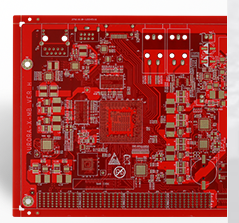In the FPC printed board, the solar solder mask process is a printed board with solder mask after screen printing. So, what are the FPC solar solder mask processes?
In the FPC printed board, the solar solder mask process is a printed board with solder mask after screen printing. Cover the pads on the printed board with a photo master so that it will not be irradiated by ultraviolet light during exposure, and the solder resist protection layer is more firmly attached to the printed board surface after ultraviolet light, and the pads are not exposed to ultraviolet light. Light irradiation can expose the copper pads so that lead and tin can be applied during hot air leveling. So, what are the solder mask processes?
The first procedure is exposure
First of all, before starting the exposure, check whether the polyester film and glass frame of the exposure frame are clean. If they are not clean, wipe them with an anti-static cloth in time. Then, turn on the power switch of the exposure machine, then turn on the vacuum button to select the exposure program, and shake the exposure shutter.

Before starting the formal exposure, let the exposure machine "empty exposure" five times. The function of "empty exposure" is to enable the machine to To enter the saturated working state, the most important thing is to make the energy of the ultraviolet exposure lamp enter the normal range. If you do not "empty exposure" the energy of the exposure lamp may not enter the best working state. It will cause problems with the printed board during exposure. After five times of "empty exposure", the exposure machine has entered the best working condition. Before using the photographic plate for alignment, check whether the quality of the plate is qualified. Check whether there are pinholes and exposed parts on the film surface of the base plate, and whether it is consistent with the graphics of the printed board, because this will check the photo base to avoid rework or scrapping of the printed board due to unnecessary reasons.
The second process is developing
The developing operation is generally carried out in the developing machine, and the developing parameters such as the temperature of the developing solution, the conveying speed, and the spray pressure are well controlled to obtain a better developing effect. Development is to remove the solder mask on the pad with a developing solution for the shading part. The developing solution is 1% anhydrous sodium carbonate, and the liquid temperature is usually between 30 and 35 degrees Celsius. Before the formal development, the developer should be heated up to make the solution reach a predetermined temperature, so as to achieve the best development effect.
The third process is to repair the board
Repairing the board includes two aspects. One is to repair the defects of the image, and the other is to remove the defects that are not related to the required image. In the process of repairing, you should pay attention to wearing gauze gloves to prevent hand sweat from contaminating the board. Common FPC board defects are: skip Printing is also called whitening, oxidation, uneven surface, solder resist in the hole, pinholes in the pattern, dirt on the surface, inconsistent colors on both sides, cracks, bubbles, and ghosting. During the revision process, because some printed boards have serious defects that cannot be repaired, the original solder resist is dissolved by heating with sodium hydroxide solution, and then reworked after re-screen printing and exposure. Small defects, such as small copper exposed points, can be carefully repaired with a fine brush dipped in the solder mask.